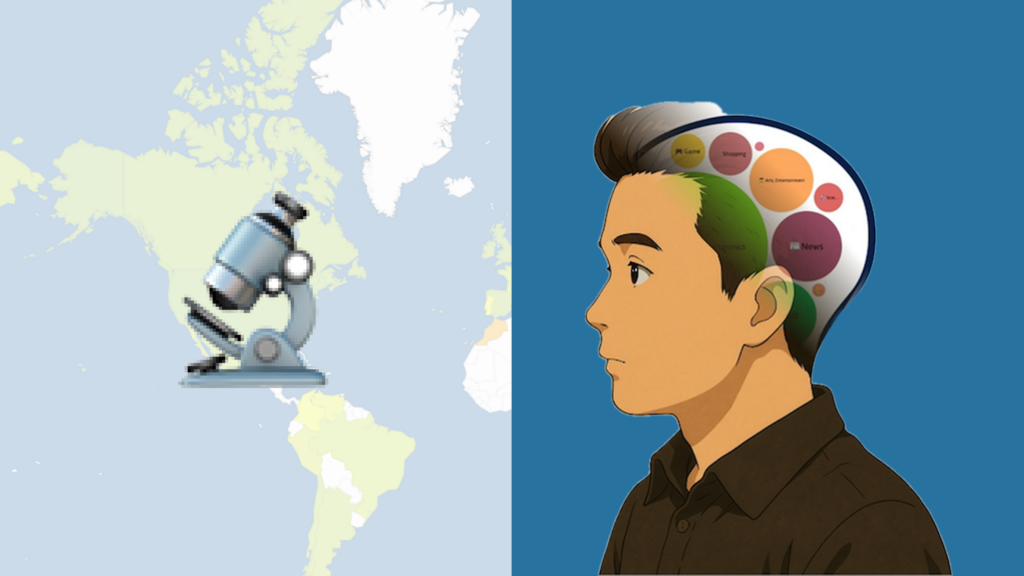What is in mind – Science

“What is in mind – Science” is a dedicated page of Traffic is People’s core insight service, “What is in mind,” providing in-depth analysis of trends in the science sector. We analyze vast amounts of traffic data from major data analysis platforms such as Google and Similarweb to provide real-time trends for content categories related to scientific theories, research, experimental results, and discoveries. It encompasses various fields such as natural sciences, physics, and biology.
Content focused on scientific theories, research, experimental results, and discoveries. It encompasses various fields such as natural sciences, physics, and biology.
Through “What is in mind – Science,” you can gain a profound understanding of the online trends in the diverse and constantly evolving fields of science, and identify the actual needs of users seeking to explore scientific knowledge, understand research trends, and obtain information on new discoveries to gain crucial insights for creating science content, setting research directions, or improving science education services.
What can you learn from “What is in mind – Science”?
Through the “What is in mind – Science” page, you can obtain the following information:
Year-over-Year Trend Changes: Analyze historical data to understand how trends in the science sector have changed and help predict future directions in scientific research and education.
Latest Science Trends: Identify the most popular topics and keywords in various fields such as innovative scientific theories, noteworthy research findings, cutting-edge experimental techniques, and groundbreaking scientific discoveries currently receiving high interest.
Popularity by Subcategory: Analyze trends in specific subcategories such as in-depth analysis of specific scientific theories, trends in the latest research papers, introductions to interesting experimental results, and prospects for scientific and technological advancements to understand what science information users are focusing on.
Adsense Estimated profit – Science
| Region | Estimated profit |
|---|---|
| South America 🌎 | $0.03 |
| North America 🌎 | $0.03 |
| Asia Pacific 🌏 | $0.02 |
| Europe Middle East Africa 🌍 | $0.02 |
| Worldwide 🌎 | $0.03 |
The table above shows estimated profits based on the Google AdSense revenue calculator, and actual revenue may vary depending on various factors.
How to Utilize “What is in mind – Science”
The “What is in mind – Science” page can be used for the following purposes:
- Developing Science Related Content Creation Strategies: Discover content topics that align with the needs of users seeking to explore scientific knowledge, understand research trends, and obtain information on new discoveries, and establish effective keyword strategies to provide accurate and engaging scientific information.
- Optimizing Science Research and Education Strategies: Identify popular science trends to utilize in selecting research topics, developing educational curricula, and formulating science communication strategies, contributing to the advancement of the science field and enhancing public understanding of science.
- Identifying Business Opportunities Related to Science: Understand user interests to develop new science technology-based services, improve science education programs, or develop science-related products.
- Analyzing the Competitive Landscape: Analyze the content strategies and provision methods of other websites providing science-related information to explore differentiated science content provision methods.
Conclusion
“What is in mind – Science” is an essential tool for deeply understanding the online trends of users interested in the vast and profound world of science, and seizing meaningful opportunities in the relevant field. We hope that the latest data and analysis we provide will give you valuable insights for formulating your science content creation, research direction setting, and science education service improvement strategies.

